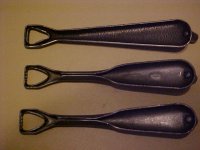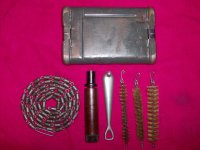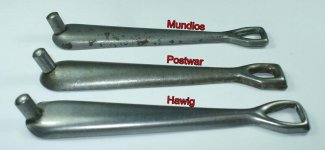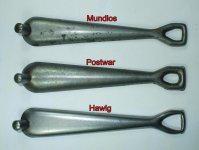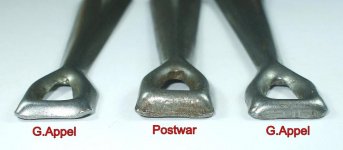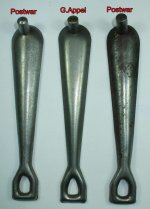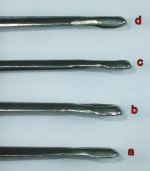Stumbled across a few photos online of some Mundlos (ab) marked kits. What I noted was some incongruities in the cleaning tools (hulsenkopfwiseher). Typically "ab" kits have the "oar" type pattern tool. In looking at my three "ab" marked kits (ab41, ab42 & ab44) the HKWs are shown respectively, from bottom to top. First tool bears a small "ab41" marking. Second tool is a slightly larger marking "ab42" & E/WaA243 accepted. Third tool is a late pattern & unmarked which came in my '44 dated kit.
In looking at the photos of the kits viewed online, I noted one with what resembles the earlier pattern tool (and is marked "ab41"). However, note the wide, flat-stamped patch end of the tool. This seems like a change which might have taken place a year or two later than the code/date stamp would indicate. The last photo shows a long, tapered tool somewhat similar to the late, unattributed one found in my "ab44" kit. It is hard to see, but is stamped "ab43" on the shaft. Don't think I have seen this particular pattern before. Member thoughts and comments solicited...
In looking at the photos of the kits viewed online, I noted one with what resembles the earlier pattern tool (and is marked "ab41"). However, note the wide, flat-stamped patch end of the tool. This seems like a change which might have taken place a year or two later than the code/date stamp would indicate. The last photo shows a long, tapered tool somewhat similar to the late, unattributed one found in my "ab44" kit. It is hard to see, but is stamped "ab43" on the shaft. Don't think I have seen this particular pattern before. Member thoughts and comments solicited...


